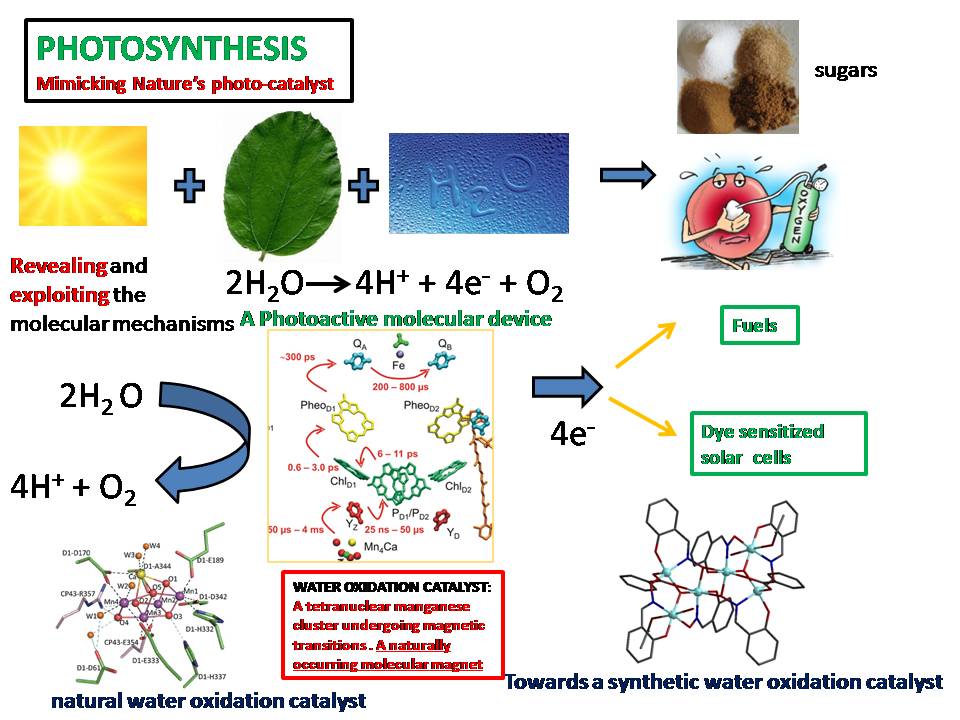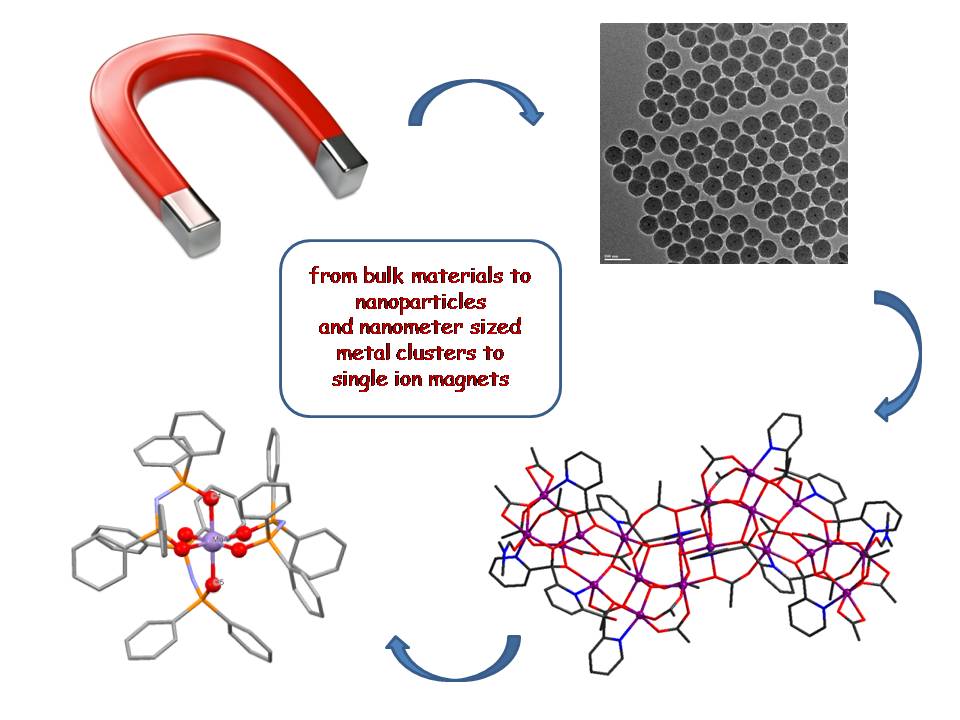ABOUT
The research of the group focuses on the study of molecule based materials using their magnetic behavior either as an inherent property or as a detection and characterization tool. Our research aims towards the elucidation of the mechanisms governing fundamental phenomena and the development of novel multifunctional systems such as molecule based energy converting and photocatalytic materials, materials for magnetic storage and cooling and spin based materials for Quantum Computing.
The activities of the group can be distinguished in two major pillars.
(a) the understanding of the function of active centers in biological systems, which catalyze important processes (conversion of light energy to electric charge separation, water oxidation, electron/proton transfer etc). In particular we are interested in the structure and function of the Photosynthetic water oxidizing apparatus in living organisms.

(b) the study of the electronic and magnetic properties of synthetic oligo- and poly-nuclear complexes of transition metals and lanthanides and magnetic nanoparticles. Research in this field aims at the determination of key parameters pertinent to these systems such as oxidation and electronic state of the ions, the exchange coupling scheme in polynuclear clusters, magnetic anisotropy, charge hoping, dynamic magnetic behavior etc.

Our main methodology is based on the application of spectroscopic techniques such as Electron Paramagnetic Resonance (EPR) and Mössbauer Spectroscopy as well as the application of magnetic measurements (static and dynamic).
We collaborate with other research groups within INN including the groups of Permanent Magnets, Magnetic Recording and Thermoelectrics, Crystallography and Coordination Chemistry of Materials, Superconducting and Magnetic Oxides, Nanofunctional and Nanocomposite Materials and Advanced EPR Methods and Electron Spin Dynamics in Molecular and Nanoscaled Materials.
We collaborate also with research groups in universities and research centers in Greece including the universities of Athens, Patras, Ioannina, and Thessaloniki as well as from Europe (University of Cyprus; University of Oxford, UK; Max Planck Institute for Chemical Energy Conversion, Germany) and U.S.A. (Florida International University, University of Florida, Missouri University of Science and Technology, Carnegie Mellon University, National High Magnetic Field Laboratory).